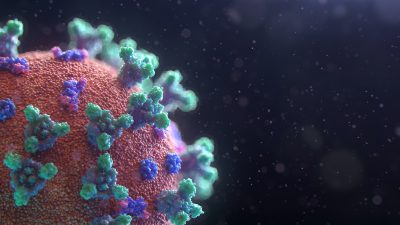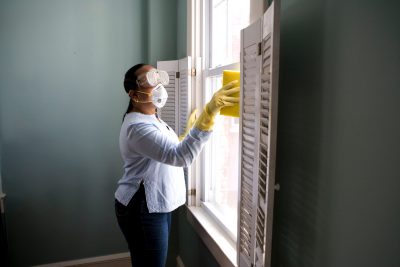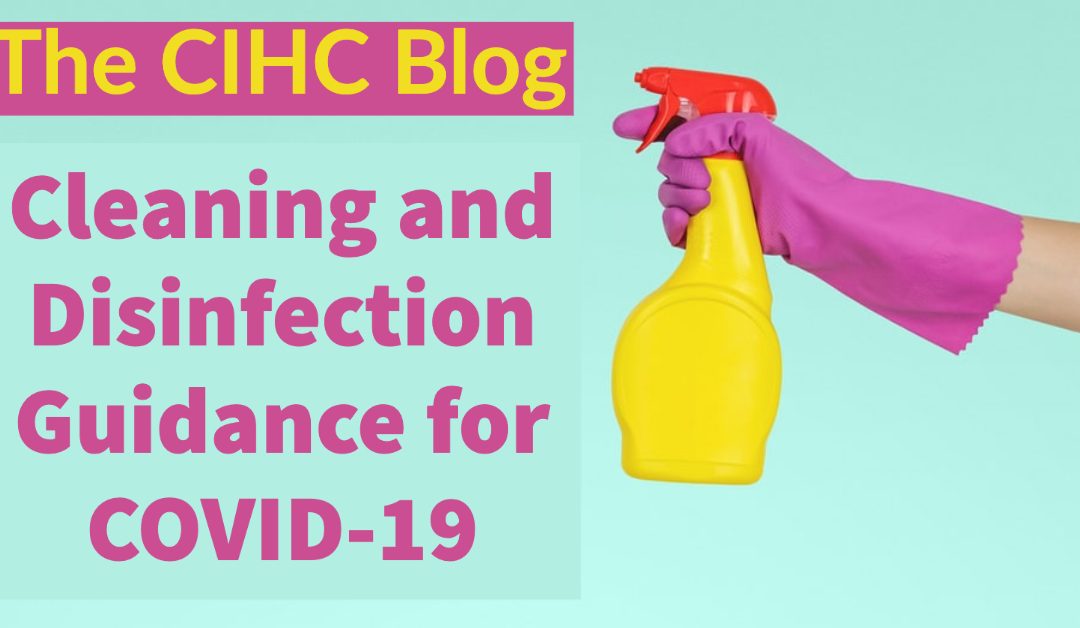Coronavirus primarily spreads two ways:
- An infected person sneezes, coughs on or touches another person; or
- An infected person sneezes, coughs on, or touches a surface that another person later touches.

The virus causing COVID-19, SARS-CoV-2 is an enveloped virus, which means it is one of the easiest viruses to kill. Here are some cleaning tips if you are concerned that surfaces in your home or workplace may have been contaminated by an infected individual.
First of all, it should be noted that there is a difference between cleaning and disinfecting. According to the Center for Disease Control:
- Cleaning refers to the removal of germs, dirt, and impurities from surfaces. It does not kill germs, but by removing them, it lowers their numbers and the risk of spreading infection.
- Disinfecting refers to using chemicals, such as those approved by Health Canada (see below) to kill germs on surfaces. This process does not necessarily clean dirty surfaces or remove germs, but by killing germs on a surface after cleaning, it can further lower the risk of spreading infection.
Note: Cleaning is always the first step. Disinfectants and sanitizers do not work on dirty surfaces.

Health Canada has a list of hard-surface disinfectants which meet Canada’s requirements for COVID19: https://www.canada.ca/en/health-canada/services/drugs-health-products/disinfectants/covid-19/list.html
This list is updated regularly, so it’s advised that it be checked often for new information. It is important that the directions on the labels are followed, so that the disinfectant is on the surface long enough to actually neutralize the infection agent on the surface.
Alternatively, household bleach (at least 1000 ppm sodium chlorite) can be used if appropriate for the surface. Again, follow the manufacturer’s instruction for application. Allow the product to remain on the surface at least one minute. Never mix household bleach with ammonia or any other cleaners. Ensure the product is not expired. Unexpired household will be effective against coronavirus when properly diluted. Health Canada recommends 1 teaspoon per cup of water or 4 teaspoons per litre of water.
Touchpoints are surfaces which are more likely touched by occupants. Since people are not precise when touching objects, touchpoint cleaning should extend past the focused item 3-12 inches.
Common touchpoints include, but are not limited to:
• door knobs and locks, • door push bars,
• door push bars,
• door edges and jambs on the side opposite the hinges,
• stair and ramp hand railings,
• cupboard handles and drawer pulls, • appliance handles,
• light switches,
• table and desktops,
• telephones,
• toilet seats and flush handles,
• faucet handles,
• soap pumps,
• keyboards and mice,
• elevator buttons,
• credit card keypads,
• vending machine buttons,
• equipment controls,
• television remote controls,
• chair armrests, bedrails, and countertops.
Contact time matters for sanitizers and disinfectants. They work only if they are left on the surface for specified times. Ensure that you follow the manufacturers’ instructions on the label.
For electronics, follow the manufacturer’s instructions for all cleaning and disinfection products. Consider using wipeable covers on your electronics. In the absence of manufacturer guidance, use alcohol-based wipes with at least 70% alcohol to disinfect touch screens. Ensure surfaces are dried thoroughly to avoid pooling of liquids.
For soft or porous surfaces, such as carpet, rugs, drapes, remove visible contamination if present and clean with appropriate cleaners as indicated for these surfaces, then launder as appropriate in accordance with the manufacturer’s instructions. Use to warmest appropriate water setting and ensure the item is completely dried out after.
Resources:
- CDC Cleaning and Disinfection for Households
- Preliminary Report for Restoration Contractors Assisting Clients With COVID-19 Concerns
- Health and Safety while Cleaning and Disinfecting for Coronavirus
- Safer Cleaning, Sanitizing and Disinfecting Strategies to Reduce and Prevent COVID-19 Transmission

